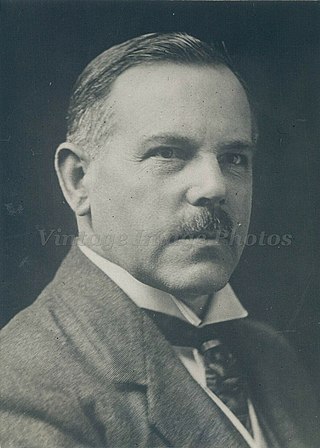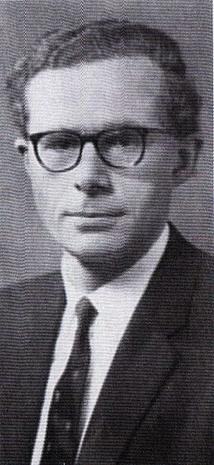Related Research Articles

The Institution of Civil Engineers (ICE) is an independent professional association for civil engineers and a charitable body in the United Kingdom. Based in London, ICE has over 92,000 members, of whom three-quarters are located in the UK, while the rest are located in more than 150 other countries. The ICE aims to support the civil engineering profession by offering professional qualification, promoting education, maintaining professional ethics, and liaising with industry, academia and government. Under its commercial arm, it delivers training, recruitment, publishing and contract services. As a professional body, ICE aims to support and promote professional learning, managing professional ethics and safeguarding the status of engineers, and representing the interests of the profession in dealings with government, etc. It sets standards for membership of the body; works with industry and academia to progress engineering standards and advises on education and training curricula.
Sir William Halcrow was one of the most notable English civil engineers of the 20th century, particularly renowned for his expertise in the design of tunnels and for projects during the Second World War.
Halcrow Group Limited was a British engineering consultancy company.

Brigadier-General Sir Henry Percy Maybury was a British civil engineer. He began his career as a railway engineer, working on many railways in England and Wales before becoming the county surveyor for Kent. At the start of the First World War he was appointed to supervise roads used by the Allies in France, holding the British Army rank of Brigadier-General. In recognition of his services in this theatre he was appointed a Companion of the Order of the Bath and a Knight Commander of the Order of St Michael and St George by the British government and an officer of the Legion of Honour by the French. After the war he held various civil service positions, mainly within the Ministry of Transport, and was elected president of the Institution of Civil Engineers in 1933.

Sir William Henry Glanville CB CBE FRS was a British civil engineer. During World War II he and the Road Research Laboratory were involved in important war work, developing temporary runways, beach analysis, and tank and aircraft design. He also worked on the explosives calculations and scale models used to develop the bouncing bombs used in the Dam Busters Raid.
Sir William Gordon Harris was a British civil engineer. His early career was with the London, Midland and Scottish Railway and in the Sudanese Irrigation Department before he began a 26-year spell with the Admiralty Civil Engineers Department. Harris rose to become Civil Engineer in Chief in 1959 and was responsible for building facilities to cope with the change in focus of the Royal Navy from gunnery ships to aircraft carriers and submarines, including the nuclear submarine docks at Faslane. Harris was later made director-general of highways in the Ministry of Transport during which time he was responsible for the construction of the 650 miles of motorway, a focus on ground investigation at pre-tender stage and the development of new motorway signalling and telecommunications systems. He later entered private practice as a consulting engineer and was chairman of the Port of Dover. Harris also served as president of the Institution of Civil Engineers and of the Smeatonian Society of Civil Engineers.

Sir Alan Marshall Muir Wood was a British civil engineer.

The Department of Civil and Environmental Engineering is the academic department at Imperial College London dedicated to civil engineering. It is located at the South Kensington Campus in London, along Imperial College Road. The department is currently a part of the college's Faculty of Engineering, which was formed in 2001 when Imperial College restructured. The department has consistently ranked within the top five on the QS World University Rankings in recent years.

James Anthony "Tony" Gaffney, CBE, FICE, FREng, FCIHT (1928–2016) was a British civil engineer.
David Gwilym Morris Roberts was a British civil engineer, cited as "one of the most influential civil engineers of the 20th century". Born in North Wales, he grew up in Merseyside before attending Cambridge University. Following graduation, he served with the Royal Naval Volunteer Reserve, including several cruises on board HMS Sheffield. After demobilisation he served part-time with the naval reserves reaching the rank of lieutenant commander. In civilian life Roberts was employed by water engineering consultant John Taylor & Sons and remained with them and their successor bodies for the rest of his career. He became founder chairman of the successor Acer Consultants in 1987, holding the post for five years, during which the group's turnover quadrupled and employee numbers trebled.
Professor Tim Broyd is an English civil engineer who was elected the 152nd President of the Institution of Civil Engineers, taking office in November 2016.
Rachel Susan Skinner is a British civil engineer with Canadian-based consultant WSP Global. She was named one of the Daily Telegraph Top 50 Influential Women in Engineering in 2016 and both the Best Woman Civil Engineer and the Most Distinguished Winner at the European Women in Construction and Engineering Awards in 2017. Skinner became the youngest president of the Institution of Civil Engineers in 2020. In 2019, she was elected a Fellow of the Royal Academy of Engineering (FREng). She was appointed CBE for services to infrastructure in the 2022 New Year Honours.
Michèle Dix CBE is a British civil engineer. She is the managing director of Crossrail 2 and had previously been the director of planning for Transport for London. In 2016, Dix was named as one of the Top 50 Influential Women in Engineering.
Stuart Norman Mustow CBE was a British civil engineer. Mustow has a long association with municipal engineering, being county surveyor of the West Midlands from 1974 to 1986. He was involved in the development of the M5 and M6 motorways and in bringing the Birmingham Inner Ring Road under the control of his county. Mustow retired from municipal work in 1986 to enter private practice and was later a director at WS Atkins. Mustow was president of the Institution of Municipal Engineers and of the Institution of Civil Engineers and was a fellow of the Royal Academy of Engineering.

Olawale Nelson Ogunshakin OBE is a British engineer and businessman. He is currently chief executive officer of the International Federation of Consulting Engineers (FIDIC) based in Geneva, Switzerland. He was appointed to the board of Transport for London in September 2016.
Danielle Skelley OBE MBA BEng CEng MICE FCIHT, known as Dana, is Managing Director of Grain of Sand Consulting Ltd. Prior to setting up her own consultancy business she was Director of Strategy and Operational Excellence at Skanska. She is a Council Member of the Chartered Institution of Highways and Transportation. She was Director of Asset Management at Transport for London.
Roger Sainsbury is a British civil engineer. He spent much of his career with the construction contractor Mowlem, including work on Immingham Oil Terminal and the Natwest Tower. He rose to become a director of the firm and was responsible for Mowlem’s participation in the creation of the Manchester Metro and for the company’s role as creator and developer of London City Airport. Sainsbury left Mowlem in December 1995 and subsequently devoted much time to the Institution of Civil Engineers (ICE), being president for the 1998-9 session. Sainsbury resigned his membership of the Institute in 2001, becoming the first president to take such a step, "because the way in which its affairs are conducted is, in my view, not compatible with its position of trust to its membership." From March 2023, Roger has been a founder of the Deprived Pensioners Association, established to fight for justice for Pension Protection Fund (PPF) members lacking fair indexation.
Asa Binns was a British mechanical and civil engineer. He trained with hydraulic pump and engine makers before becoming a draughtsman. Binns worked for a period at HMS Chatham Dockyard and rose to become head of their civil engineering works. He later worked on the construction of several major docks in London, including for the Port of London Authority. Binns served as president of the Institution of Engineers-in-Charge (1936–37) and the Institution of Mechanical Engineers (1940). He was elected president of the Institution of Civil Engineers in 1946 but died before he could take office.
Dato' Dr. Ir. Dennis Ganendra, DIMP, ASA, M.A. Hons (Cantab), MSc (Eng), DIC, Ph.D., P.Eng, FREng., FICE, FIHT, FIEM, ASEAN Eng., APEC Eng. IntPE, MACEM, MIEAust, CPEng, RPEQ, Malaysian entrepreneur and engineer, is the first chief executive officer of Minconsult Sdn Bhd, a leading multi-disciplinary engineering consultancy. He is a Fellow of the Royal Academy of Engineering,UK.
References
- ↑ Masterton, Gordon (2005), ICE Presidential Address, archived from the original on 3 January 2011, retrieved 21 July 2013
- 1 2 3 4 Hannah, Gay (2007). History Of Imperial College London, 1907-2007, The: Higher Education And Research In Science, Technology And Medicine. World Scientific. p. 560. ISBN 9781908979445 . Retrieved 4 June 2018.
- 1 2 3 4 "Town clerk becomes PTE director-general". Commercial Motor. 6 June 1969. Retrieved 4 June 2018.
- ↑ Gay, Hannah (2007). The history of Imperial College London, 1907-2007 : higher education and research in science, technology and medicine. London : Imperial College Press. p. 560, note 125. ISBN 978-1-86094-708-7.
- ↑ "Special award for Metro and the man who helped to create it". www.nexus.org.uk. 12 November 2020.
- ↑ "No. 50361". The London Gazette . 30 December 1985. p. 8.
- ↑ "The Institution Award". Chartered Institution of Highways & Transportation. Retrieved 4 June 2018.
- ↑ "Tony Melville Ridley – Personal Appointments". Companies House. Retrieved 4 June 2018.
- ↑ "Emeritus, honorary and visiting staff | Faculty of Engineering | Imperial College London". www.imperial.ac.uk. Retrieved 22 March 2024.
- 1 2 Institution of Civil Engineers. "Past Presidents". Archived from the original on 22 August 2010. Retrieved 4 June 2018.
- 1 2 Tony, Ridley (2017). Engineering In Perspective: Lessons For A Successful Career. World Scientific. p. 249. ISBN 9781786342300 . Retrieved 4 June 2018.
- ↑ "Emap buys Telford directories". New Civil Engineer. 8 January 1998. Retrieved 4 June 2018.
- ↑ "Emap buys Construction News". Construction News. 10 August 1995. Retrieved 4 June 2018.